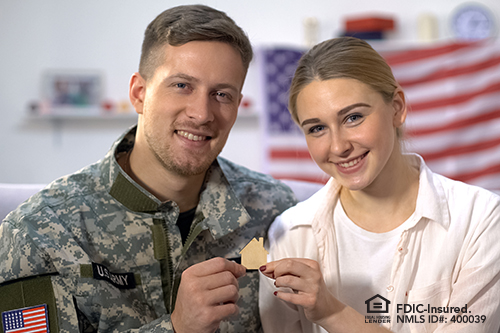Navigating the world of home financing can be a complex process, especially for veterans and active military personnel.
Enter VA Loans.
The U.S. Department of Veterans Affairs backs these mortgages and offers several benefits, including no down payment and competitive interest rates.
But what exactly is a VA Loan? How does the program work, and who is eligible for it?
This blog will answer these questions and more. It aims to provide a comprehensive understanding of VA Loans, helping you make informed decisions about home financing.
Understanding VA Loans
VA loans are designed to make homeownership more accessible for military personnel. They are specifically available to eligible veterans, active-duty members, reservists, and certain surviving spouses.
These loans are not issued directly by the Department of Veterans Affairs (VA). Instead, private lenders provide them, and the VA guarantees these loans. This guarantee encourages lenders to offer borrowers more favorable terms.
The History and Purpose of VA Loans
The VA Loan program was established in 1944 as part of the Servicemen's Readjustment Act of 1944, also known as the GI Bill. Its main goal was to help returning veterans adjust to civilian life by making homeownership more attainable.
Over the years, the program has evolved to meet the changing needs of service members. It emphasizes providing financial support and security to those who have served, helping millions of families achieve the dream of homeownership.
VA Loan Benefits
VA loans provide several compelling benefits for eligible borrowers. One of the most significant advantages is that they require no down payment, making home buying more accessible for many veterans.
Another benefit is the absence of private mortgage insurance (PMI). Without this extra cost, monthly mortgage payments are often lower than those for conventional loans.
Moreover, VA Loans often come with competitive interest rates. These rates are generally lower than those of traditional mortgage options, which can result in significant savings over the life of the loan.
Borrowers also enjoy foreclosure avoidance assistance. This support helps veterans and service members facing financial difficulties maintain homeownership.
Here's a quick list of benefits:
- No down payment needed
- No PMI required
- Competitive interest rates
- Assistance during financial hardship
Finally, VA Loans are reusable, meaning veterans can use them multiple times throughout their lives. This flexibility ensures that veterans can always rely on the benefits provided by this program.
Eligibility Requirements for VA Loans
To qualify for a VA Loan, certain eligibility criteria must be met. Primarily, these loans are available to veterans, active-duty service members, reservists, and members of the National Guard.
In addition to service members, certain surviving spouses may qualify. This applies if their partner died in the line of duty or due to service-related injuries.
A Certificate of Eligibility (COE) is required for the application. This document verifies service history and confirms eligibility for the loan.
Though the VA has no minimum credit score requirement, most lenders look for a score of at least 620. It's important to note that eligibility guarantees the option to apply, but does not assure loan approval. Meeting the lender's criteria is still necessary.
VA Loan Requirements and Limits
VA Loans come with specific requirements and guidelines. First, borrowers must meet both the Department of Veterans Affairs and the lender's criteria.
Interestingly, VA Loans do not impose a strict credit score requirement. However, lenders typically expect a minimum score of 620, which helps ensure borrower reliability.
Though there is no official cap on loan amounts, limits depend on the borrower's entitlement and local county guidelines. These limits help determine how much the VA can guarantee, but borrowers can often secure higher loans if prepared to make a down payment. Understanding these limits helps in navigating the VA Loan process efficiently.
The VA Loan Application Process
Applying for a VA Loan begins by obtaining a Certificate of Eligibility (COE). The COE confirms your VA Loan eligibility and military service.
Next, find a VA-approved lender to start the pre-approval process. Pre-approval involves assessing your financial situation and determining how much you can borrow.
Once pre-approved, begin searching for your desired property. When you find a home, the loan process continues with an appraisal and underwriting, leading to the final loan approval and closing. Understanding each step ensures a smoother experience and better outcomes.
VA Loan Funding Fee and Other Costs
One significant aspect of a VA Loan is the funding fee. This fee is required for most borrowers and helps keep the VA Loan program self-sustaining, without relying on taxpayer dollars.
The funding fee varies based on several factors, including your military service, loan amount, and whether it is your first VA Loan or a subsequent use. Importantly, some veterans with service-connected disabilities are exempt from the fee.
Besides the funding fee, expect closing costs, although these are generally lower than those for conventional loans. You may even negotiate for the seller to cover some of these costs, easing the financial load. Some lenders, such as NASB, do not charge an origination or application fee for VA loans as part of the closing costs.*
VA Loan and Property Types
VA Loans are flexible when it comes to property types. They can be used to buy single-family homes, condos, and even some multi-unit properties, provided you live in one of the units.
Another benefit of VA Loans is that they can be used to purchase manufactured homes, provided they meet certain conditions. The property must meet the VA’s minimum property standards, focusing on safety and soundness, ensuring a secure living environment for veterans and their families.
Refinancing with a VA Loan
Refinancing through a VA Loan offers distinct options. The Interest Rate Reduction Refinance Loan (IRRRL), commonly known as a VA Streamline Refinance, allows for lowering your current interest rate. It requires minimal paperwork, making the process smooth and efficient.
Additionally, the VA Cash-Out Refinance offers the flexibility to tap into your home's equity. This option allows for the refinancing of both VA and non-VA loans. It's a beneficial route for accessing cash for home improvements or other expenses while retaining the benefits of a VA Loan.
VA Loan Myths vs. Facts
Misconceptions about VA Loans abound. It's crucial to distinguish facts from myths to make informed decisions.
Common Myths and Facts:
- Myth: VA Loans are hard to qualify for.
- Fact: Many veterans easily meet eligibility requirements due to the flexibility of the criteria.
- Myth: VA Loans take longer to process.
- Fact: Processing times are often similar to those of conventional loans.
Conclusion: Why a VA Loan Might Be Right for You
VA Loans present a unique opportunity for veterans and service members. These loans stand out due to their numerous benefits and financial advantages, making them appealing to those who qualify.
Beyond financial perks, the peace of mind that comes with no down payment or PMI significantly eases the homebuying journey. This simplicity is crucial for many, as it supports immediate homeownership dreams without the traditional financial barriers.
Moreover, the VA Loan program is especially designed to cater to the unique needs of veterans and service members. With its focus on flexibility and support, it aims to ensure a smooth homeownership experience, providing a solid foundation for the future. If you would like to learn more about VA home loans, please get in touch with the experts at NASB by calling 855-957-2430 or visiting this link for more information.
*NASB does not charge lender fees on VA loans; however, fees payable to third-party service providers are still required, including a VA funding fee if applicable.




